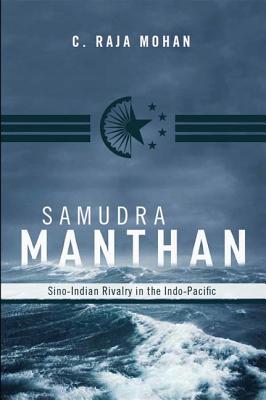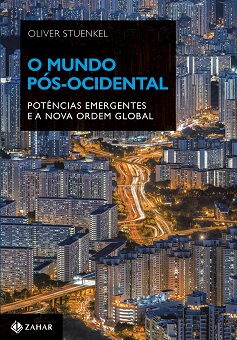Samudra Manthan: Sino-Indian Rivalry in the Indo-Pacific, by C. Raja Mohan. Carnegie Endowment for International Peace (2012), 360 pages. $17.96 (Paperback) on www.amazon.com
Reviewed for The Diplomat.
The bilateral relationship between India and China remains a fringe topic among academics of international relations around the world. And yet, Sino-Indian ties will shape the 21st century like few other themes over the coming decades. In fact, the triangular relationship between the United States, China and India, soon the three largest economies in the world will be as important as US-Soviet ties during the Cold War. Increased tension and the prospect of conflict between New Delhi and Beijing could seriously affect the global economy – strong cooperation between the two, on the other hand, could pose a real challenge to U.S. global supremacy.
In this context, Raja Mohan’s Samudra Mathan is a welcome contribution. Mohan, one of India’s leading foreign policy analysts and one of the few scholars based in the Global South with a global reach, contends that the growth of India’s and China’s naval capabilities will extend the security dilemma between the two countries. It will not only express itself in the lands of inner Asia, but also to the waters of the Indian and Pacific Oceans. The author thus agrees with Robert Kaplan, who argues in his recent book that the Indian Ocean will turn into the new center of power in global politics and the stage for the “new Great Game” where global power dynamics will be revealed.
Policy makers in both New Delhi and Beijing are unlikely to publicly agree with Mohan’s argument. After all, both governments frequently point out that “Asia is big enough for two global powers”. And yet, the author’s claim that as China’s and India’s economies globalize and the two states acquire interests far beyond their own territorial and regional waters, “their naval footprint will grow, overlap, and generate the basis for potential conflict in the Indo-Pacific” seems to make sense at first glance.
A few important caveats apply, however. First of all, the usefulness of the concept of the “Indo-Pacific” is debatable, and some will argue it artificially inflates the degree of overlap between India and China. After all, the presence of India’s navy in the Pacific is still very low. Despite recent investments, China’s navy is still far too small to rival that of the United States in any region of the world. The assumption that the border conflict between both countries will inevitably lead to similar conflicts over maritime borders is equally open to contestation – after all, China’s and India’s navies could just as well cooperate.
This leads to a larger question: Will Sino-Indian ties in the coming decades be marked by cooperation or conflict? Mohan’s prediction that it will be the latter will lead some observers in the Global South to accuse him of buying into a Western narrative and argument in favor of enduring U.S. hegemony – namely, the assumption that China, India, Russia and other emerging powers will rather focus on competing against each other than unite against the United States.
There are plenty of reasons to be pessimistic. First, China and India have been at war before – in 1962 – and the resulting border dispute is yet to be resolved. Secondly, Asia lacks strong regional institutions that could serve as a platform to resolve future problems (many exist already, ranging from issues around the Dalai Lama and Pakistan to the Nuclear Suppliers Group). Thirdly, both countries are extremely resource-hungry and could soon clash over how to share them in times of scarcity. Fourthly, both countries possess nuclear weapons, which points to potentially disastrous consequences for its combined 2.5 billion inhabitants.
And yet, it seems unlikely that India’s and China’s future leaders will repeat the same mistakes Europe’s leaders made a century ago. Trade ties between both countries are vast, and both societies will focus on eradicating poverty for many decades to come, with little interest in destabilizing the region. Even though China is not democratic, the Communist Party leadership is keenly aware that its legitimacy depends on strong economic growth, not merely on increased military power.
The title is perhaps the most controversial aspect of the entire book, as it implicitly describes the Sino-Indian relationship as a battle between angels and demons, and the United States as a God-like arbiter between the two.
With Samudra Manthan, Mohan has clearly positioned himself when it comes to the future of Sino-Indian relations. It is up to policy makers in New Delhi and Beijing to prove him wrong.
Read also:
Book review: “Monsoon: The Indian Ocean and the Future of American Power” by Robert D. Kaplan
How many diplomats does an emerging power need?









